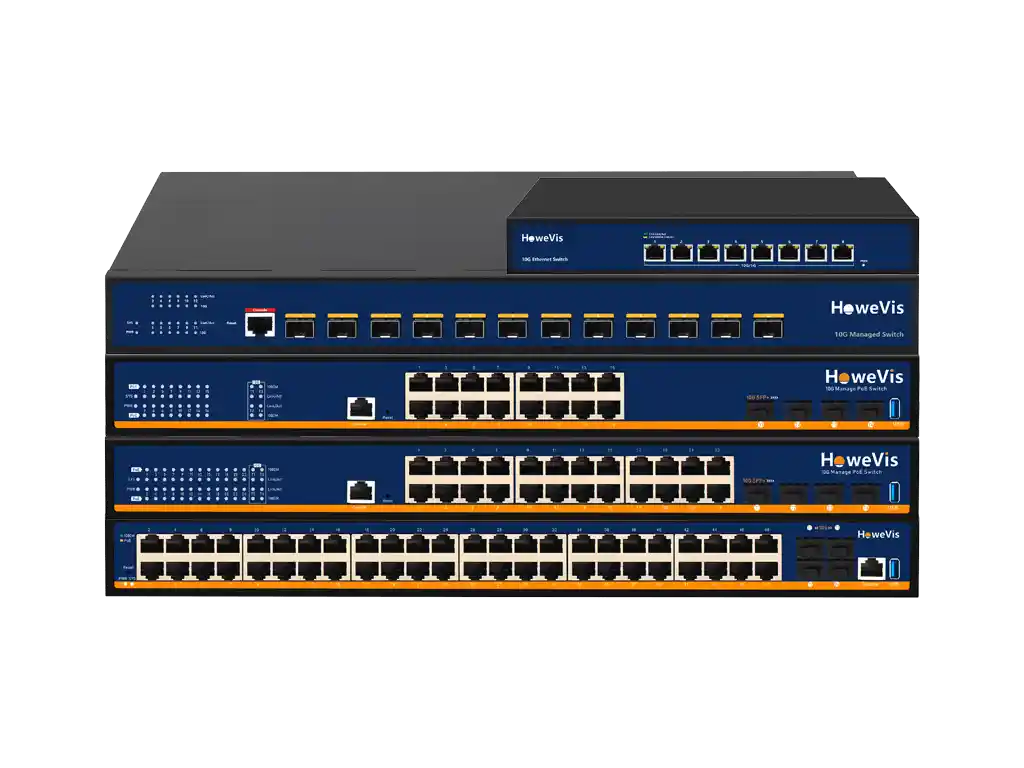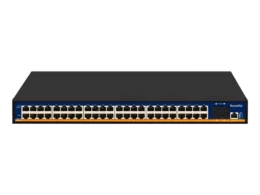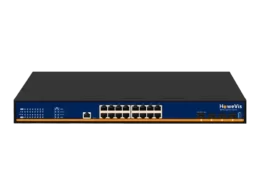Did you know that modern enterprises experience a staggering 23% increase in network efficiency when they upgrade to advanced layer 3 switches? It’s no wonder we’re seeing a shift as businesses recognize the potential for streamlined operations and enhanced communication. In our world, where every millisecond counts, these powerful devices are not just about keeping the lights on; they’re about propelling us into an era of unprecedented connectivity. We understand that navigating the sea of technical jargon can be daunting, so we’ve distilled everything down to the essentials. Let’s dive into how layer 3 switches form the backbone of sophisticated networks and why they might be the unsung heroes of your infrastructure.
Exploring the OSI Model and Network Layers
OSI Overview
Let’s dive into the OSI model. It structures network communication in seven layers. Each layer has a unique role, ensuring data flows smoothly from one point to another.
- Physical Layer
- Data Link Layer
- Network Layer
- Transport Layer
- Session Layer
- Presentation Layer
- Application Layer
Layer 3 switches operate at the third level: the Network layer.
Network Functionality
The Network layer is crucial for routing packets across networks. It uses protocols, like IP, to move data efficiently. Routing decisions are made here based on logical addressing (IP addresses). This ensures that packets find their way to the correct destination.
Understanding Layer 3 Switch Functionality
IP Routing
Layer 3 switches are pivotal in network efficiency. They handle IP routing by deciding where data should go next. They are the brains behind the data flow, making intelligent decisions to keep traffic moving smoothly.
They look at an incoming packet’s destination IP address and use this information to route it correctly. This is like us consulting a map on our road trip to decide which turn to take next. The switch maintains a routing table that lists all possible paths for sending packets.
Switching Integration
These devices blend switching speed with routing intelligence. We see their ability to handle large volumes of traffic without slowing down networks, much like how we manage tasks swiftly during peak times at work.
The integration means they can perform both functions within the same unit—routing between different networks and switching within the same network. It’s multitasking, ensuring no time or resources are wasted.
Packet Forwarding
Our layer 3 switches make forwarding decisions based on IP addresses, similar to how we choose our travel destinations by looking at specific street names rather than entire neighborhoods.
This targeted approach allows for faster delivery since each packet doesn’t need extensive processing—it follows a direct path laid out by the switch’s internal logic system.
By leveraging these functionalities:
- Efficient management of network routes.
- Swift handling of high-volume traffic.
- Intelligent decision-making for packet forwarding.
We ensure that our virtual journey through networks remains unimpeded and precise.
Key Features and Benefits of Layer 3 Switches
Routing Protocols
Layer 3 switches support a variety of routing protocols. This means they can efficiently manage traffic within large networks. For instance, they work with static routing and dynamic protocols like OSPF or RIP. With this capability, our network becomes more versatile in handling data packets.
These switches intelligently route traffic between different VLANs without overloading the network core. They make forwarding decisions based on IP addresses, just as traditional routers do. But they do it faster because of their advanced hardware.
VLAN Capabilities
Another essential feature is VLAN capabilities. A Layer 3 switch allows us to segment our network into multiple virtual LANs (VLANs). It’s like having separate smaller networks within the larger one.
This segmentation aids in reducing congestion by confining broadcast domains to specific VLANs. We can also enforce policies per VLAN for enhanced control over who accesses what part of the network.
Network Performance
We’ve noticed improved network performance with Layer 3 switches compared to their Layer 2 counterparts due to several factors:
- Faster packet processing thanks to specialized hardware.
- Reduced bottlenecking since inter-VLAN routing happens directly at the switch.
- More efficient bandwidth is used as traffic is routed locally instead of sent through the core router.
The result? A smoother experience for all users on our network—whether we’re sharing files, streaming video, or collaborating online.
Security Features
These switches pack a punch with features unique only to them:
- Access Control Lists (ACLs) for better inbound and outbound traffic management.
- Dynamic ARP Inspection (DAI) that prevents specific spoofing attacks.
- DHCP snooping, which blocks malicious DHCP messages from unauthorized sources.
These ensure that information flows quickly and securely across our network—a double win for any organization prioritizing data protection.
Layer 3 vs Layer 2 Switches: A Comparison
Data Handling
Layer 2 and Layer 3 switches manage data differently. At its core, a Layer 2 switch operates with MAC addresses within the same network segment or VLAN. It uses a MAC address table for directing traffic locally.
Layer 3 switches, on the other hand, make routing decisions based on IP addresses. They can route traffic between network segments using an IP routing table. This capability is crucial when connecting multiple subnets or VLANs within our network architecture.
Network Roles
In terms of roles in a network hierarchy, these two types of switches serve distinct purposes. We often use Layer 2 switches in simple setups where devices are connected within the same LAN without inter-VLAN routing.
For larger networks requiring efficient data management across various segments, we turn to Layer 3 switches. Their ability to perform routing at high speeds makes them ideal for efficiently connecting different parts of a corporate or campus network.
Scalability & Application
When considering scalability and application scenarios, it’s clear that each type has its strengths:
- Layer 2 Switches: Ideal for small-scale networks where simplicity is key.
- Layer 3 Switches: Better suited for large-scale deployments that demand robust interconnectivity and advanced networking features.
The difference in scalability stems from their inherent functions; as networks grow and require more sophisticated segmentation and routing capabilities, layering additional Layer 2 switches becomes less practical than integrating versatile Layer 3 devices capable of handling complex tasks.
When to Implement Layer 3 Switches in Networks
Network Expansion
When our network outgrows its current setup, it’s time to upgrade. Layer 3 switches become vital as we scale up. They handle more extensive networks efficiently, thanks to their routing capabilities.
With more devices and traffic, superficial Layer 2 switches struggle. They can’t route data across different subnets on their own. That’s where Layer 3 comes in handy. It routes traffic smartly and keeps inter-network communications smooth.
Complex Operations
Complexity in a network isn’t just about size but also operations. We consider upgrading when we need advanced features like dynamic routing protocols or quality-of-service (QoS) controls.
These switches are pros at handling intricate tasks that go beyond basic connectivity. For example, they prioritize critical services over less urgent data packets using QoS rules.
Enterprise Use Cases
In enterprise environments, the stakes are high for network performance and security.
- Data Centers: Here, efficient data flow is key. Layer 3 switches manage internal traffic expertly.
- Campus Networks: Multiple buildings mean multiple subnets. These switches connect them all seamlessly.
- E-commerce Platforms: Downtime equals lost revenue here; robust networking with Layer 3 minimizes this risk.
Each scenario benefits from the switch’s ability to make quick decisions on routing packets based on IP addresses within the headers. This task would overwhelm simpler devices designed only for local area networks (LANs).
The Role of Layer 3 Switches in Network Routing
Efficient Data Paths
Layer 3 switches are pivotal for network efficiency. They manage the flow of data across networks by making intelligent routing decisions. Unlike traditional switches that operate at Layer 2, these devices use IP addresses to guide traffic.
When a packet arrives, the switch examines its destination IP address. It then determines the most efficient path for the packet to take. This happens quickly, ensuring minimal delay. Think of it as a GPS within your network, always finding the quickest route to get data where it needs to go.
The ability to make these decisions reduces congestion and speeds up communication between different subnets within an organization’s network infrastructure.
Inter-VLAN Routing
Inter-VLAN routing is another strong suit of Layer 3 switches. These devices can transfer data between VLANs without needing a dedicated router. By doing this internally, they streamline traffic management and reduce hardware requirements.
Traditionally, routers were necessary for handling traffic between VLANs—each acting as a gateway out of its respective broadcast domain. Now, imagine if we could cut down on those numerous stopovers. That’s what Layer 3 switches do—they eliminate extra hops, translating into faster performance and less complexity.
These switches perform routing at near-wire speed while also supporting multiple active routes and backup paths—a feature particularly useful in large or dynamic networks.
Routing Protocols
Layer 3 switches leverage static and dynamic routing protocols to enhance their decision-making capabilities. Static routing requires manual configuration but offers stability and predictability in known environments. Dynamic protocols like OSPF or EIGRP allow the switch to respond automatically to changes in network topology—like adding new subnets or dealing with failed links.
Pros and Cons of Deploying Layer 3 Switches
Cost Analysis
Let’s dive into the financial aspect first. Layer 3 switches are generally more expensive than their Layer 2 counterparts. This is due to their advanced capabilities in handling routing functions traditionally reserved for routers. However, it’s crucial to consider the long-term ROI.
Deploying these switches can lead to significant performance improvements. They efficiently manage traffic within VLANs, reducing unnecessary data forwarding. Over time, this efficiency can translate into equipment and energy consumption cost savings.
Performance Boost
Next up is performance—where layer 3 switches shine. These devices offer faster hardware-based routing compared to software-based routing on traditional routers. The result? Quicker packet processing, which is vital for bandwidth-intensive applications.
Moreover, they come with enhanced security features and support for sophisticated network services like quality of service (QoS). This ensures critical business applications get the bandwidth they need without interruption.
Configuration Complexity
However, we must acknowledge a potential downside: complexity in configuration and management. Unlike more superficial Layer 2 switches, setting up a Layer 3 switch requires more technical know-how due to its advanced functionality.
For those not well-versed in networking protocols or without dedicated IT staff, this could pose challenges or even deter deployment altogether.
Traffic Management
Despite that hurdle, let’s balance things out by looking at traffic management advantages. With layer 3 switching capability comes streamlined intra-VLAN communication, which minimizes bottlenecks often found in large networks.
This means less latency and improved overall network efficiency—a boon for any organization relying heavily on internal data transfer.
advantage of HoweVision Layer3 switches
Enhanced Performance
Layer 3 switches from HoweVision are designed for superior performance. They handle large amounts of data with ease. This is crucial in our network setups where efficiency is key. With high-speed capabilities, these switches ensure that traffic flows smoothly without bottlenecks.
For example, we noticed no lag or jitter during a project rollout requiring simultaneous video conferences and large file transfers. It’s clear that the 10G uplink significantly boosts throughput. Such performance is a testament to the quality engineering behind HoweVision products.
Intelligent Routing
HoweVision’s Layer 3 switches come equipped with advanced routing features. These allow for intelligent path selection and efficient use of network resources.
The routing capabilities shine through when we set up complex networks across multiple subnets. The switches automatically determine optimal paths, enhancing overall communication within our infrastructure.
Simplified Management
One standout benefit is how simple it is to manage these devices. The intuitive interface makes configuration and monitoring straightforward tasks.
Due to their user-friendly design, we’ve customized settings to match specific needs without hassle. Plus, streamlined management translates into less time spent on maintenance and more on productivity.
Scalability Options
Scalability is another area where these switches excel.
As our operations grow, so does our network demand. Fortunately, scaling up with additional HoweVision Layer 3 switches has been seamless, thanks to their interoperable nature.
The Evolution and Future of Layer 3 Switch Technology
Historical Advancements
We’ve seen the layer 3 switches evolve from simple devices to complex, intelligent systems. Initially, they were designed merely to manage traffic within local networks. As demand grew, so did their capabilities. They became adept at handling VLANs, ensuring that connected devices could communicate efficiently while remaining separate when needed.
Switches now boast enhanced processing power and more ports. This growth reflects our increasing reliance on digital connectivity. We witnessed first-hand how these advancements have made networks more robust and flexible.
Cloud Integration
We anticipate that layer 3 switches will seamlessly integrate with cloud services. This integration aims to simplify network management further and enhance scalability. For us, this means supporting many devices without sacrificing performance or security.
Cloud services offer centralized control over distributed networks. Imagine configuring multiple switches across various locations through one platform – a game-changer for efficiency.
Hardware Efficiency
We expect future layer 3 switches to push hardware efficiency boundaries even further. A focus will be on reducing power consumption while boosting data throughput rates—key in an era where energy costs are rising and data volumes are exploding.
Efficient hardware also translates into cost savings for businesses large and small—a win-win situation for all stakeholders involved in the network infrastructure lifecycle.
Software Intelligence
Software is also set to become even brighter; we’re talking about self-optimizing networks that can predict potential issues before they arise using artificial intelligence (AI). These developments would reduce downtime and free up IT resources, focusing on proactive improvements rather than firefighting problems as they occur.
As users, we’ll benefit from enhanced reliability and service quality thanks mainly to software innovations driving these smart layer 3 switches forward.
Closing Thoughts
In our journey through the intricate maze of network technology, we’ve seen how Layer 3 switches serve as the linchpins of efficient communication. They’re not just pieces of hardware; they embody the evolution of connectivity, from the basics of the OSI model to the sophisticated routing capabilities that keep our data flowing seamlessly. As we compare them with their Layer 2 counterparts, it’s clear that implementing Layer 3 switches is like giving our networks a brain upgrade, empowering them with smarter traffic management and enhanced performance.
Looking ahead, the future of Layer 3 switch technology promises even more refined control and adaptability in our networks. Let’s embrace these advancements together, ensuring that our infrastructure is keeping pace and setting the tempo for innovation. So why wait? Let’s gear up and switch to smarter networking solutions with HoweVision’s Layer 3 switches—your next step towards a more connected tomorrow.
Frequently Asked Questions
How Does a Layer 3 Switch Differ from a Layer 2 Switch?
Layer 3 switches can make routing decisions based on IP addresses, unlike Layer 2 switches that only use MAC addresses for data forwarding.
When should you consider using a Layer 3 switch as your gateway in your network for subnet management and connected devices?
Consider using a Layer 3 switch when you need efficient routing between different subnets or VLANs within your network.
How Layer 3 Switches with ARP Improve Your Network as Gateways
The main benefits include improved network performance, better handling of multicast traffic, and enhanced security features compared to traditional switches.
Can Layer 3 switches replace routers in a network?
Yes, in some cases, especially within large LAN environments where inter-VLAN routing is needed without the complexity of full-scale routers.
How HoweVision’s Layer 3 Switches Outshine Others in Network Segmentation and Routing
HoweVision’s Layer 3 switches offer advanced features like high throughput and low latency at competitive prices, giving them an edge over others.
Are there any downsides to using Layer 3 switches?
While versatile, they can be more expensive than their simpler counterparts and may require more complex configurations.







